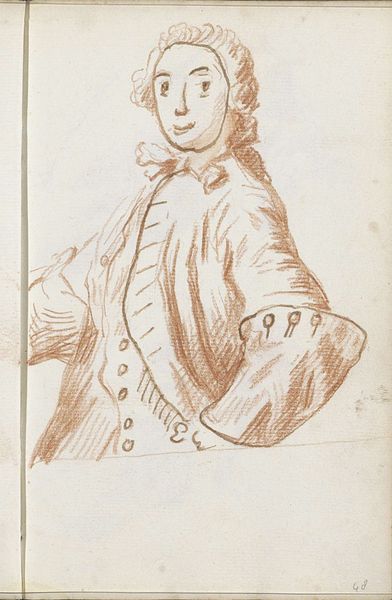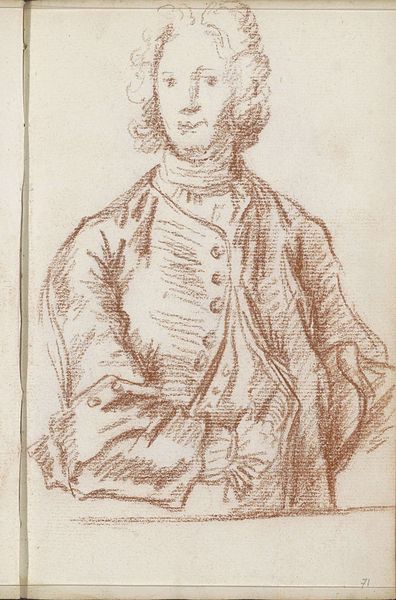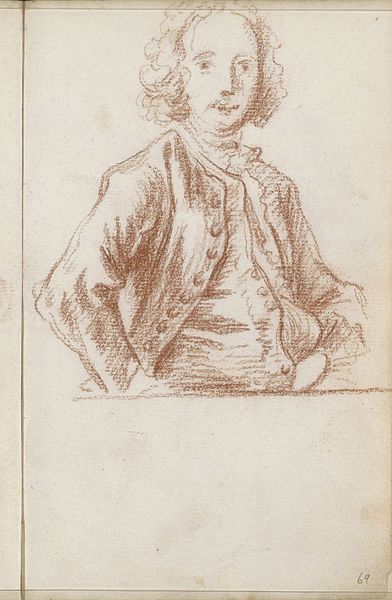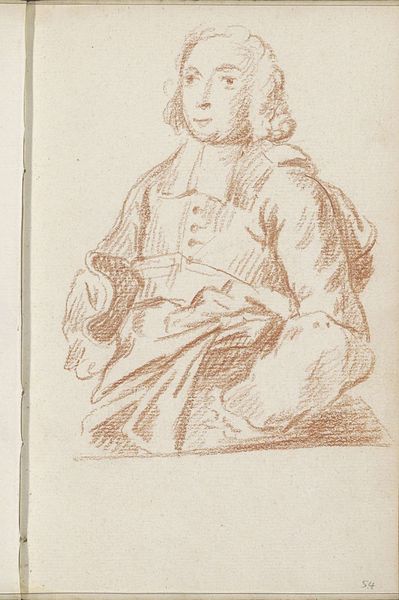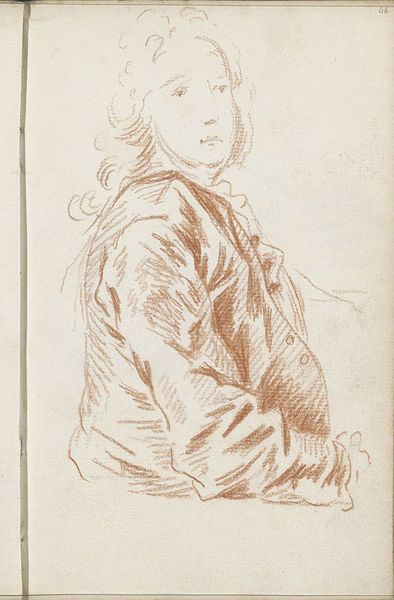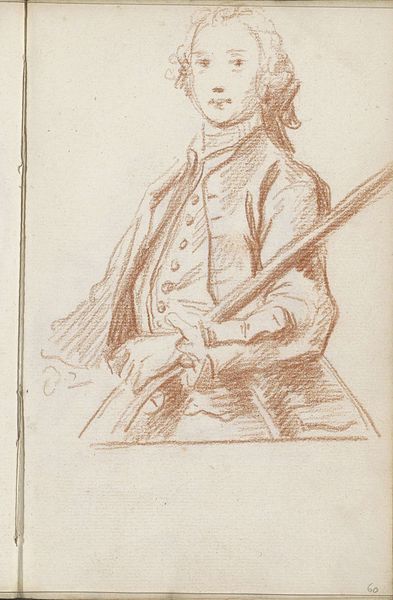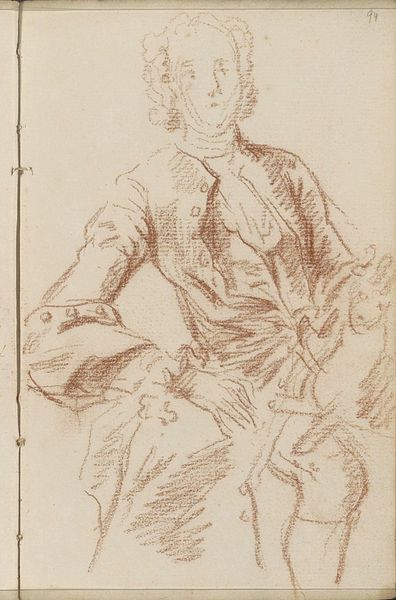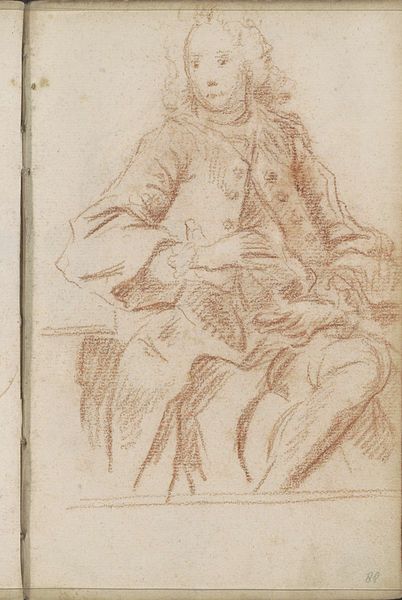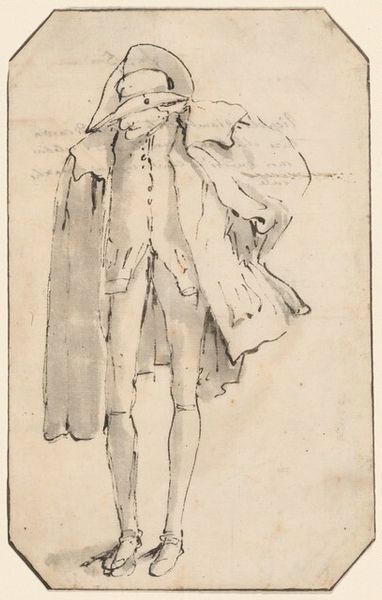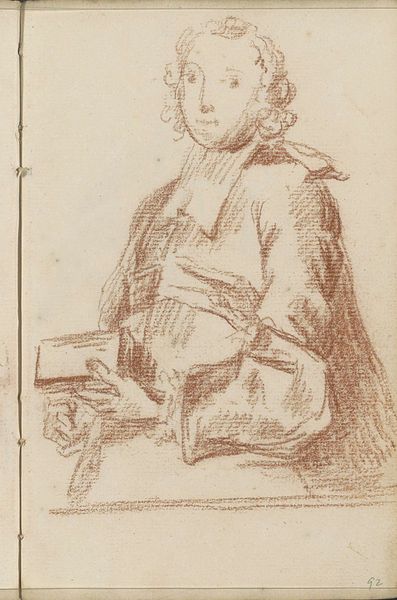
drawing, pencil
#
portrait
#
drawing
#
baroque
#
pen sketch
#
pencil sketch
#
figuration
#
pencil
Copyright: Rijks Museum: Open Domain
Editor: This is "Standing Man with Hand on Hip" by Petrus Johannes van Reysschoot, likely created sometime between 1710 and 1772. It’s a pencil drawing and strikes me as a fairly typical Baroque portrait sketch – although it's a little hard to read because it seems unfinished. What stands out to you? Curator: What I see is a glimpse into the social performance of masculinity during the Baroque era. Note the pose—hand on hip, a gesture signaling confidence and control that was carefully cultivated. How do you think this drawing functioned within the larger societal context of image-making at the time? Editor: That's interesting. I hadn't considered the performative aspect so explicitly. I guess I assumed these were studies and practices to become "good at the art". Curator: Indeed. But who did those depictions represent? Aristocrats and wealthy patrons were carefully crafting their image through portraiture. The museums and salons where such works would be displayed contributed to reinforce those ideas about identity, power and representation. Doesn't it makes you wonder about the democratization of image-making and representation with the advent of photography later on? Editor: It definitely does! It reframes the drawing less as a simple artistic exercise and more as a statement, even in its unfinished state. I guess thinking about the historical moment, beyond just art history, makes so much sense. Curator: Exactly! Thinking about the role of art within society is crucial, whether we’re considering art from the Baroque period or contemporary art. We are always engaging with systems of power and meaning. Editor: Thanks, this gave me an important additional angle for studying artworks in general.
Comments
No comments
Be the first to comment and join the conversation on the ultimate creative platform.
